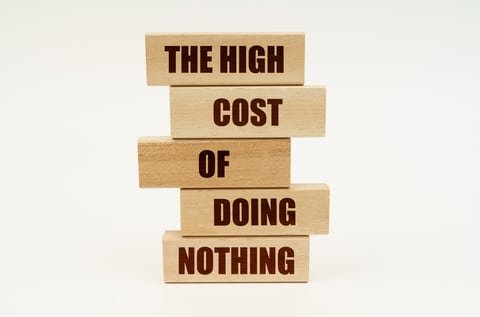Why the Status Quo Is No Longer a Safe Bet
In my supply chain risk management studies, I recently came across a document titled “Why the Cost of Doing Nothing is a Quality Concern.” The phrase stuck with me.
In fact, I referenced it during a recent webinar I led with the Association for Supply Chain Management (ASCM). While most organizations are, of course, doing something, many are still not being proactive regarding supply chain risk.
They rest in the comfort of the status quo, mistakenly believing that inaction carries no cost. But as we all know, that inaction can result in significant, often hidden, potential risks.
Sure, sometimes doing nothing is a rational, even strategic, choice. But that risk management strategy depends heavily on timing, context and situational awareness. Doing something just for the sake of appearing active won’t identify risk. That type of “risk analysis” can lead to wrong outcomes.
These days, when it comes to mitigating supply chain risk, proactive strategies aren’t optional anymore – they are critical.
ReGlobalization and the New Risk Landscape
The business world is not standing still, and neither is the global supply chain. We’re living through an era of ReGlobalization, fundamentally changing how companies must approach supply chain risk.
You may believe your organization’s risk management processes are sufficient. Your operations teams have fine-tuned procurement strategies. Transportation and distribution are solid. But you’re just one natural disaster or supply chain disruption away from problems.
And ReGlobalization is compounding potential impacts. Moving away from traditional globalization models, by definition, means operating in different geographic areas. Depending upon where you nearshore, friendshore or reshore, your teams may have little experience in those regions or countries.
GRC Can Help Mitigate Supply Chain Risk
Building a supply chain risk management program involves a lot. But there’s no shortage of frameworks, best practices or expertise available. And in today’s environment of economic disruption, cybersecurity threats and increasingly complex supply networks, ignoring that guidance is a serious misstep.
Governance, risk and compliance (GRC) is a vital discipline to weave into supply chain operations. Because ReGlobalization, rather than retreating from globalization, is making supply chains even more complex and global.
Because of this, the role of GRC in managing risks and ensuring compliance will be more important. Technological advancements like blockchain and artificial intelligence are enhancing the way we approach this discipline, enabling more intelligent monitoring and faster mitigation responses.
If you think your supply chain systems are sufficient to mitigate risk, that’s great. But technology alone won’t protect you. Your operations need a robust risk mitigation strategy, third-party risk management protocols, disaster recovery plans, downtime procedures and tightly mapped processes. Without that, even the best tools will fall short.
So, the question remains: What has your organization done – or what will it do – to develop a truly effective supply chain risk management program? One that integrates with your ERP, security posture and operational decision-making?
Effective risk assessment and risk identification are important pieces of your ReGlobalization strategy. At Tompkins Ventures, we emphasize proactive resilience, turning global volatility into strategic advantage. Because no matter how advanced your operations, the cost of doing nothing about supply chain risk remains too high to ignore.
And be sure to check out my upcoming Association for Supply Chain Management webinar, “From Risk to Resilience: Integrating SCRM, Cybersecurity and GRC.”
Related Reading
- ReGlobalization Requires Dynamic Supply Chains
- A Business Ecosystem Connects while Corporations Confine
- Static Contingency Plans Will Fail in a Dynamic Environment

Tompkins Ventures Business Partner David Williams holds a bachelor’s degree in economics and is a Certified Public Accountant (CPA) in the state of Texas. He is also a Certified Supply Chain Professional (CSCP) through ASCM and has earned two certificates in supply chain risk management, along with a certification in cybersecurity through ISC2. With extensive experience in supply chain management, David specializes in building resilient supply chains through effective procure-to-pay processes, robust risk management frameworks and heightened cyber awareness.

